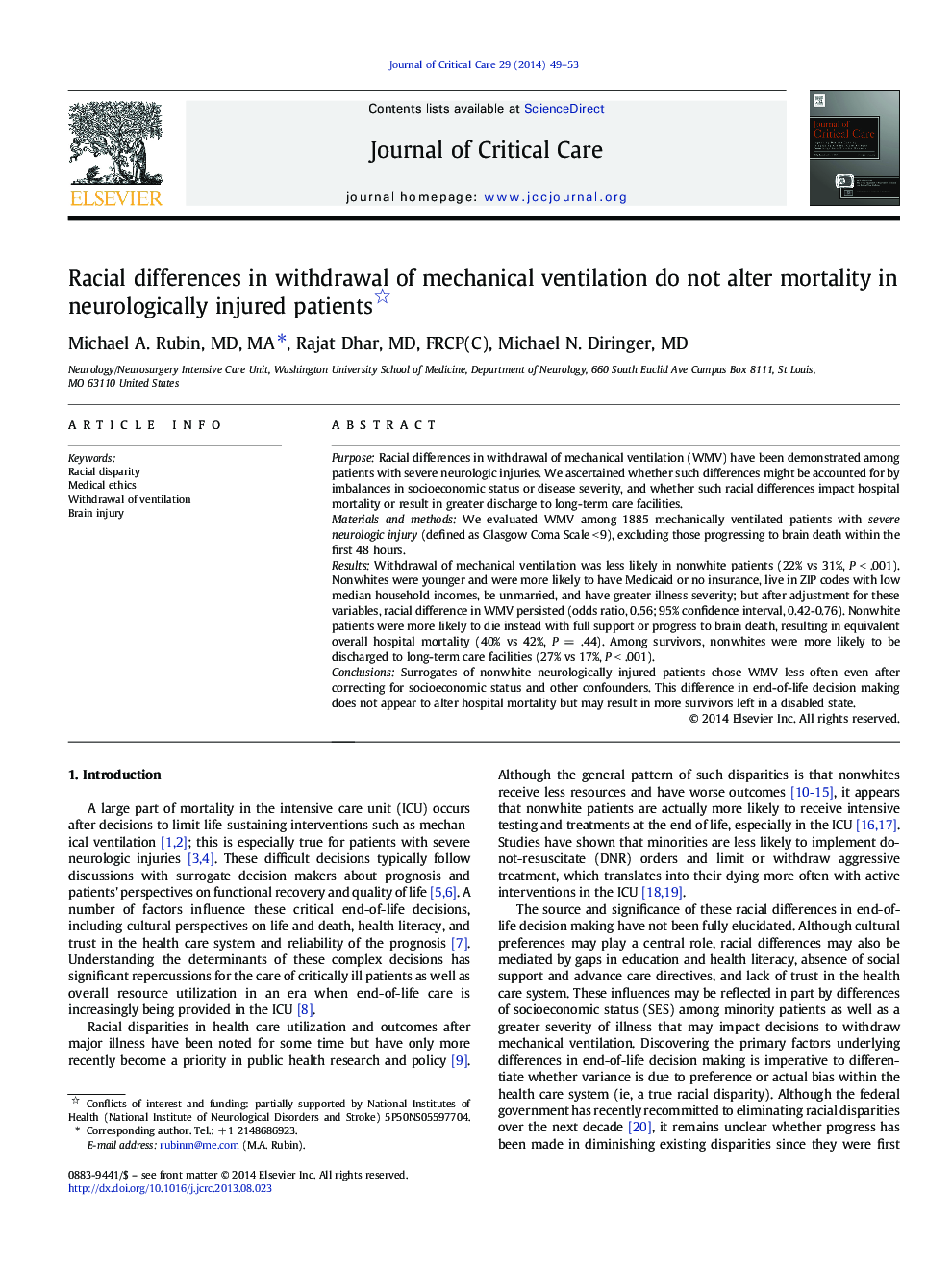| Article ID | Journal | Published Year | Pages | File Type |
|---|---|---|---|---|
| 2764653 | Journal of Critical Care | 2014 | 5 Pages |
PurposeRacial differences in withdrawal of mechanical ventilation (WMV) have been demonstrated among patients with severe neurologic injuries. We ascertained whether such differences might be accounted for by imbalances in socioeconomic status or disease severity, and whether such racial differences impact hospital mortality or result in greater discharge to long-term care facilities.Materials and methodsWe evaluated WMV among 1885 mechanically ventilated patients with severe neurologic injury (defined as Glasgow Coma Scale < 9), excluding those progressing to brain death within the first 48 hours.ResultsWithdrawal of mechanical ventilation was less likely in nonwhite patients (22% vs 31%, P < .001). Nonwhites were younger and were more likely to have Medicaid or no insurance, live in ZIP codes with low median household incomes, be unmarried, and have greater illness severity; but after adjustment for these variables, racial difference in WMV persisted (odds ratio, 0.56; 95% confidence interval, 0.42-0.76). Nonwhite patients were more likely to die instead with full support or progress to brain death, resulting in equivalent overall hospital mortality (40% vs 42%, P = .44). Among survivors, nonwhites were more likely to be discharged to long-term care facilities (27% vs 17%, P < .001).ConclusionsSurrogates of nonwhite neurologically injured patients chose WMV less often even after correcting for socioeconomic status and other confounders. This difference in end-of-life decision making does not appear to alter hospital mortality but may result in more survivors left in a disabled state.
